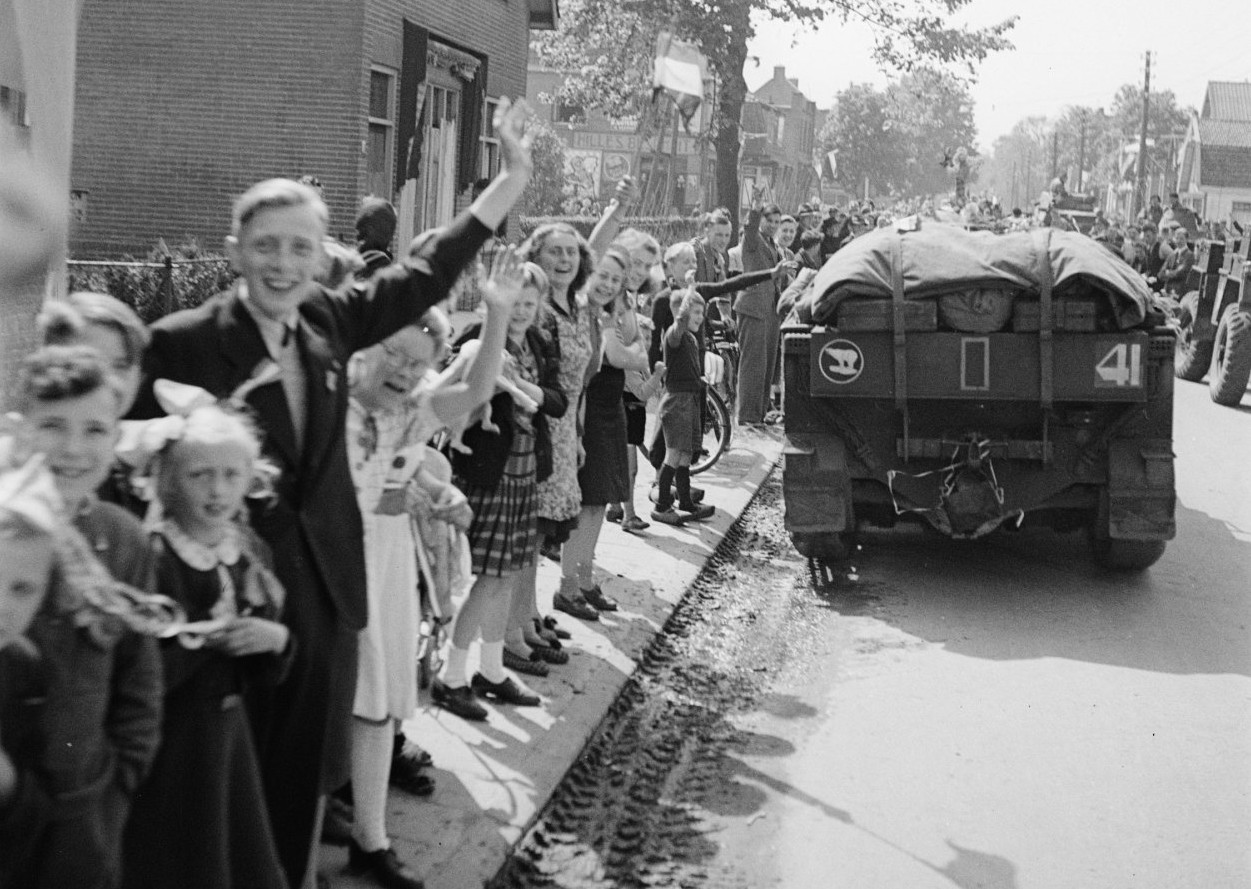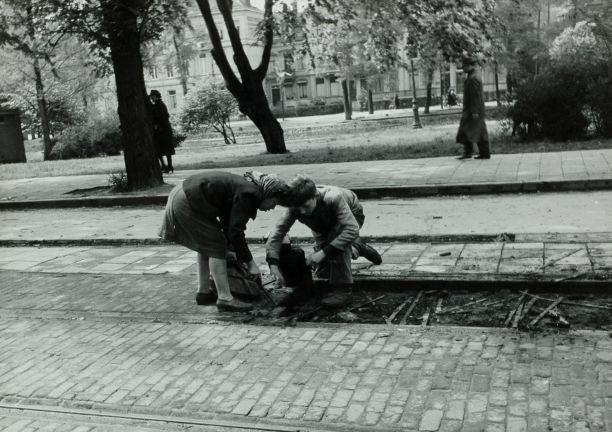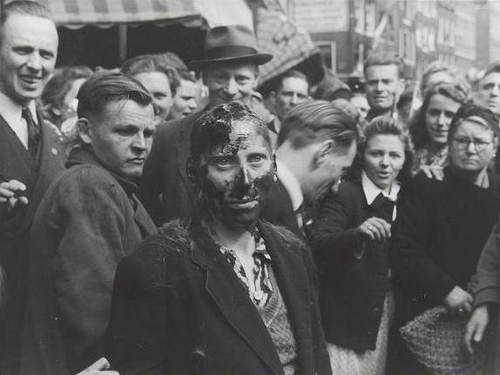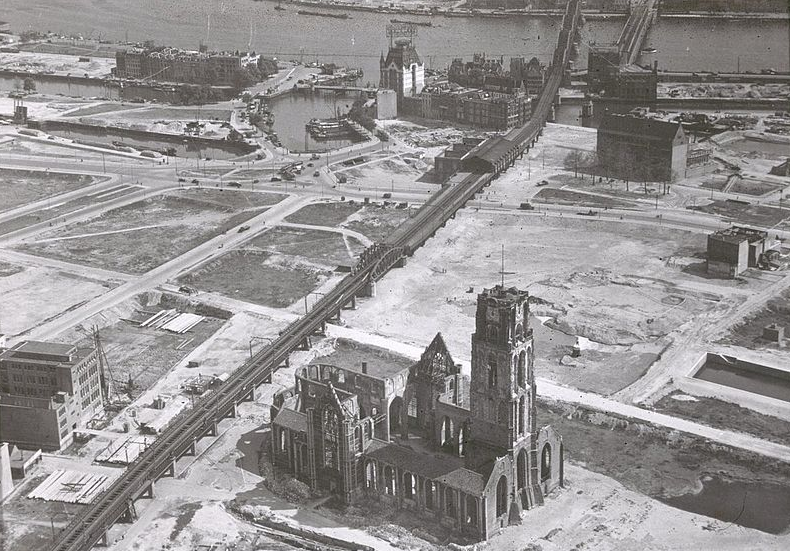10 things you need to know about the end of World War II in the Netherlands
 The Netherlands celebrates 70 years since the end of World War II on May 5. But, of course, the war did not end in a day. Here’s an overview of the main events leading up to May 5 and beyond.
The Netherlands celebrates 70 years since the end of World War II on May 5. But, of course, the war did not end in a day. Here’s an overview of the main events leading up to May 5 and beyond.
Dolle Dinsdag (Mad Tuesday)
On September 4, 1944, Dutch prime minister-in-exile Pieter Gerbrandy broadcast the news that Breda had been liberated. ‘The hour of freedom has struck,’ he proclaimed from London. People lined the streets to welcome their liberators who surely wouldn’t be long and all over the country celebratory parties were held. The news also reached the members of the NSB, the Dutch political party that collaborated with the Germans: some 60,000 of the 100,000 NSB’ers are said to have fled to Germany. But at the time, the Allies had not even crossed the border.
Operation Market Garden
The Netherlands wasn’t liberated all at once. On September 12, American troops liberated the province of Zuid-Limburg. The Allies, wanting to strike at the German industrial heartland of the Rühr, subsequently mounted Operation Market Garden, the biggest airborne attack ever attempted (Sept 17 – Sept 25, 1944). After that the liberation of the rest of the Netherlands would soon follow. But the Germans put up a much tougher fight than expected, not only at Arnhem but in many other places in the Netherlands.
Hongerwinter
The allied defeat at Arnhem meant the end of the war would not come in 1944. A railway workers’ strike incensed the Germans, who could no longer transport troops by rail, so much they blocked the transport of food and fuel to the large cities in the western Netherlands.
 Transport by water was impossible, too, as the IJsselmeer and main waterways were frozen solid. What followed was the last, desperate winter of the war. People had to turn to food kitchens and undertook dangerous treks to the countryside for food. More than 20,000 people died of hunger and deprivation.
Transport by water was impossible, too, as the IJsselmeer and main waterways were frozen solid. What followed was the last, desperate winter of the war. People had to turn to food kitchens and undertook dangerous treks to the countryside for food. More than 20,000 people died of hunger and deprivation.
Surrender
On Saturday May 5, the Germans negotiated the terms of the German capitulation in the Netherlands with Canadian general Charles Foulkes in the presence of Prince Bernhard, consort of the future queen Juliana. The place chosen for the meeting was hotel De Wereld (the World), for its practical situation on the front line and, it is said, the symbolism of its name. No documents were signed that day, however, although the date would subsequently go down in history as ‘Liberation day’. The actual signing took place the next day on a farm just outside Wageningen.
Chocolate and cigarettes
The Canadian troops entering the country – and staying there for some time- were welcomed with great enthusiasm. The well-fed, good-looking Canadian soldiers proved particularly attractive to Dutch girls and songs like Trees heeft een Canadees (Trees landed a Canadian) were popular. Before long, however, conservative voices branded the girls ‘no better than prostitutes’ who ‘find it easier to live off black market Canadian chocolate and Canadian cigarettes than money earned honourably.’ (Source: Land van Lafaards? Peter Giesen) But the jitterbug proved irresistible and many a Trees left for Canada with her Canadian.
Shooting at Dam square
On May 7, thousands of Amsterdammers gathered on Dam square to welcome the allied troops. But in the surrounding streets Germans were still being routed from buildings such as the palace and the post office. A British tank, with Dutch revellers clinging on, even passed some retreating German vehicles.

Some time later – the Brits had left – shots rang out. Dutch troops and Germans were firing at each other and people panicked and fled. More shots were fired from the Groote Club, a gentleman’s club on Dam square, where another group of Germans was hiding out. The official number of dead is put at 22.
Retaliation
Although the government-in-exile had prepared a law to deal with collaborators as early as 1943, when the time came justice was sometimes arbitrary and chaotic. Of the police force, 6% were fired after the war, but in other sectors the percentages were much lower. Some 400 NSB mayors were tried and convicted, and some 700 others fired. 150 death sentences were pronounced of which 40 were actually carried out.

So-called ‘Moffenhoeren’ (Kraut whores), women who had been in a relationship with a German, were publicly humiliated by having their heads shaved in the street, behaviour in some cases condoned by the authorities to ‘relieve the tension surrounding collaboration’. (Source: NPS, De Oorlog). Just how many women were shamed in this way is unknown.
Return
Shameful, too, is the way the Jews who survived the camps came back to find their homes and possessions gone. They were often met with incomprehension and sometimes downright antagonism. Although many did receive support, the knowledge that so many had perished made this liberation a very bitter one indeed. This from Jewish Amsterdammer Sem Goudsmit’s diary: ‘The neighbours are celebrating. Yesterday and today, day and night. Music is playing, everyone’s singing loudly the merry and sentimental songs. 95,000 innocent dead in Auschwitz, 95,000 of their countrymen who would have wanted to see this, will not return to their city, their homes – the families have been destroyed, burned, their heaped ashes in the foreign place they were dragged off to.’
Wederopbouw
Some cities in the Netherlands – Rotterdam, Arnhem and Nijmegen among them – had been particularly hard hit. Of the 25,000 homes in Arnhem, 145 remained intact. Bridges and roads were damaged and building material was scarce.

Agricultural land had to be cleared of mines – a job mostly done by German prisoners of war who were declared ‘military personnel who have surrendered’ so as not to contravene the Geneva Convention. It wasn’t until the American aid programme Marshall plan in 1948 that the Wederopbouw, or reconstruction, could kick off in earnest. It was another 10 years before it was felt the deprivation of the war had been truly left behind.
May 4 and May 5
Remembrance Day (May 4) commemorates all civilians and members of the armed forces who have died in wars or peacekeeping missions since the outbreak of World War II. The main wreath-laying ceremony takes place at the National Monument on Dam Square in Amsterdam, which is usually attended by the king and other royal family members, ministers, and military leaders. At 20.00 hours there is a two minute silence.
Liberation Day (May 5) celebrates the end of the occupation by Nazi Germany. Events kick off in Wageningen and the Liberation flame is lit shortly before midnight. Torches are then taken by runners, cyclists and inline skaters to other Liberation fires all over the country. There are also Liberation Day festivals, featuring top pop acts – one in each province and one in Amsterdam. Every five years, Bevrijdingsdag is an unofficial public holiday and this happens to be one of those years.
Thank you for donating to DutchNews.nl.
We could not provide the Dutch News service, and keep it free of charge, without the generous support of our readers. Your donations allow us to report on issues you tell us matter, and provide you with a summary of the most important Dutch news each day.
Make a donation